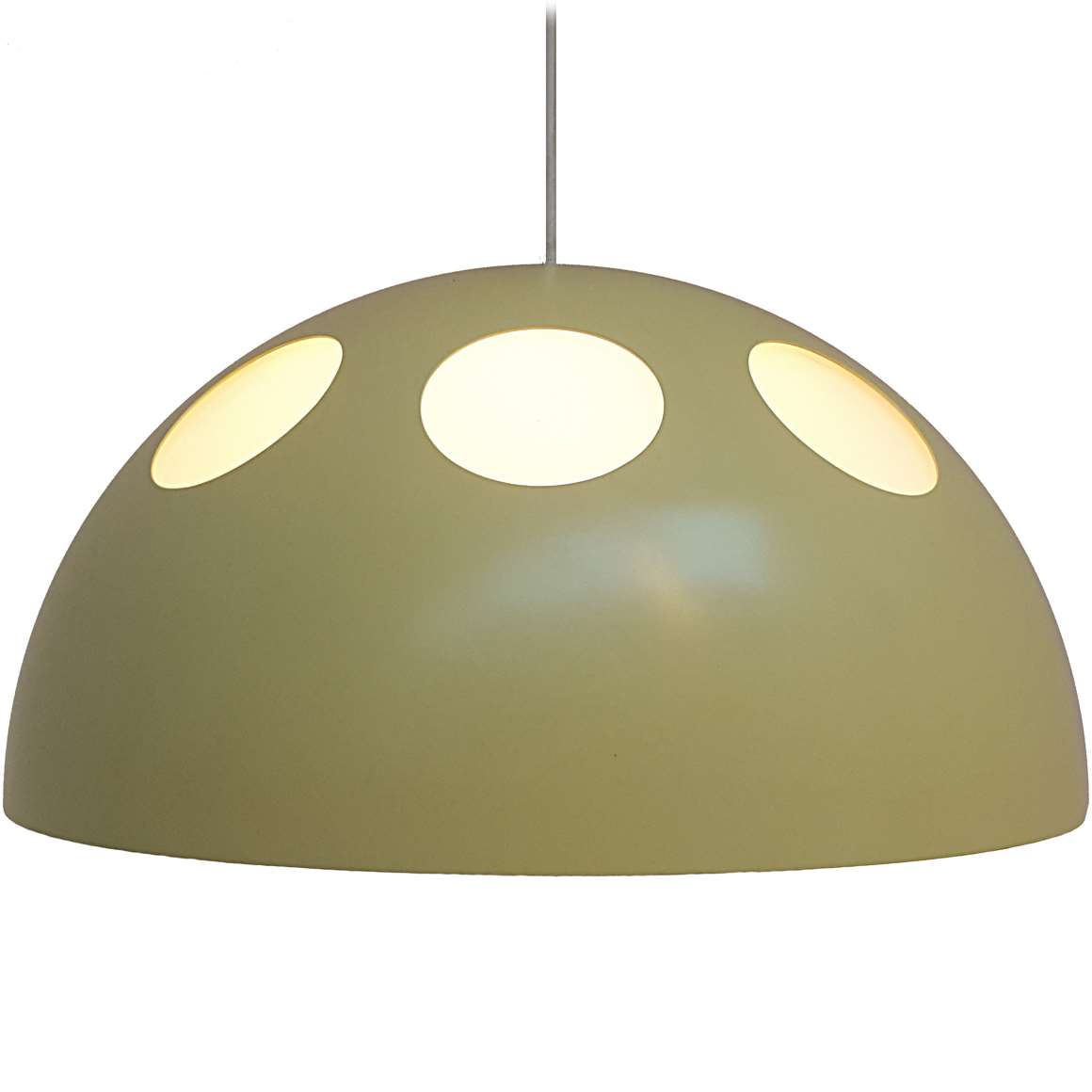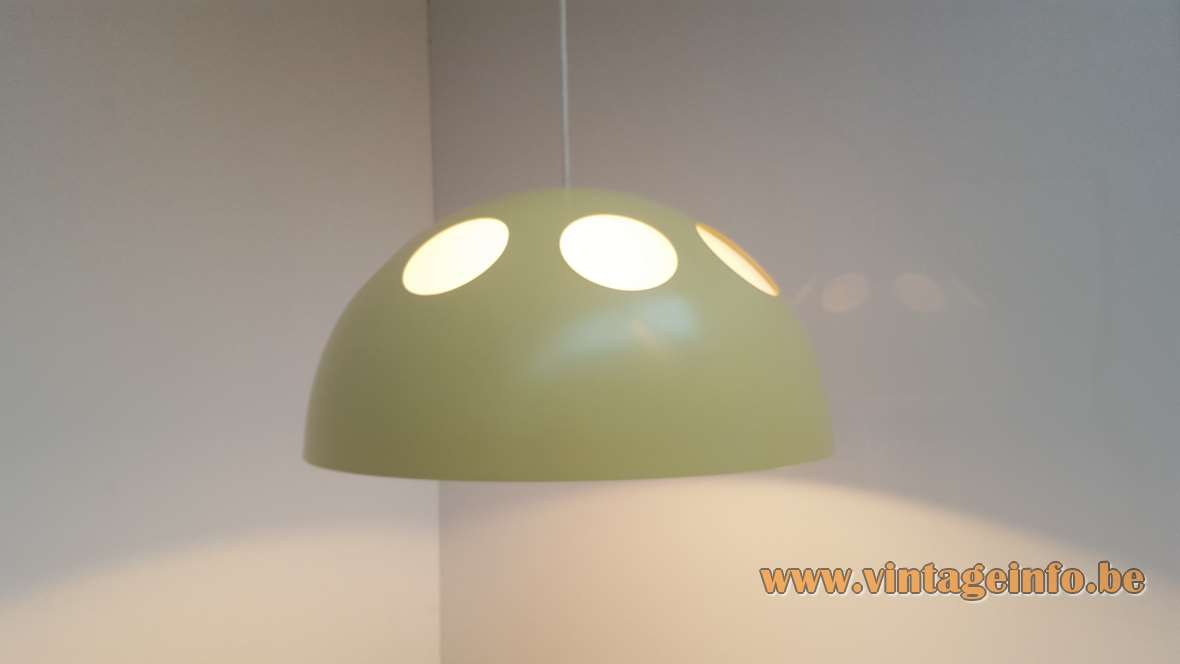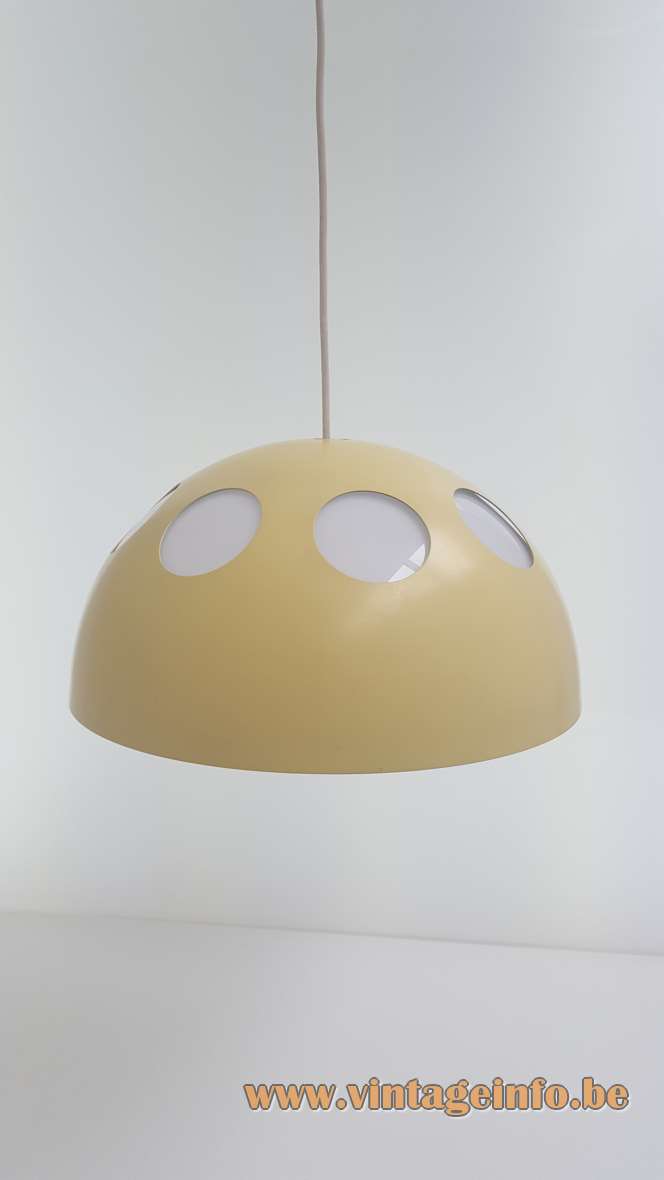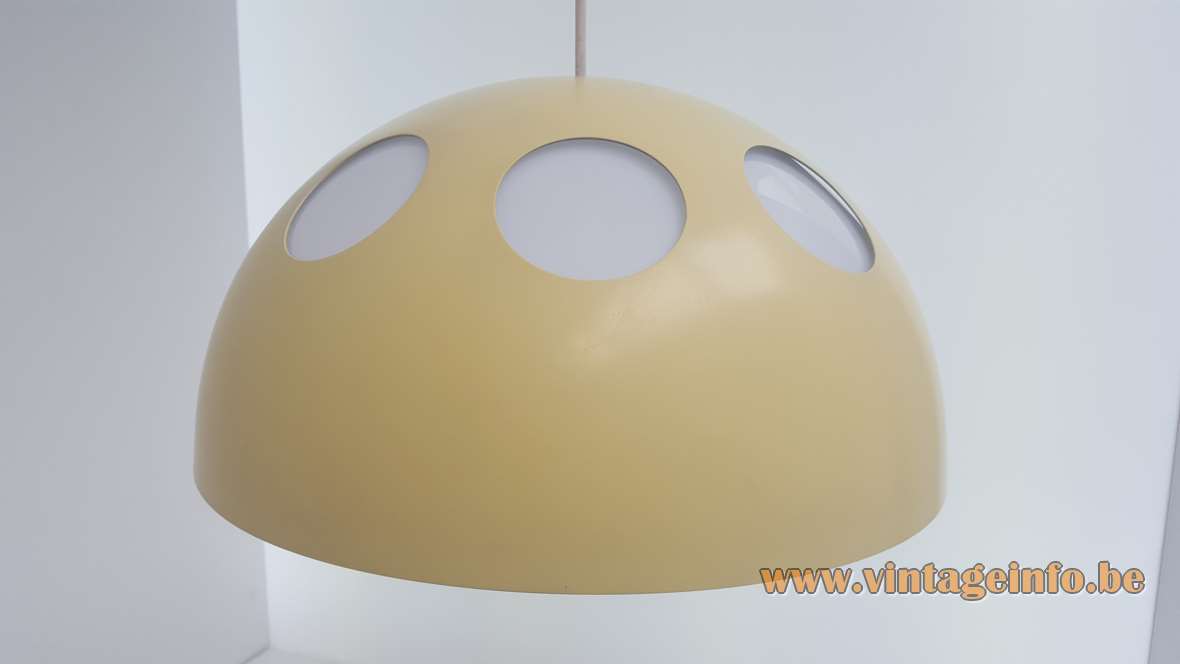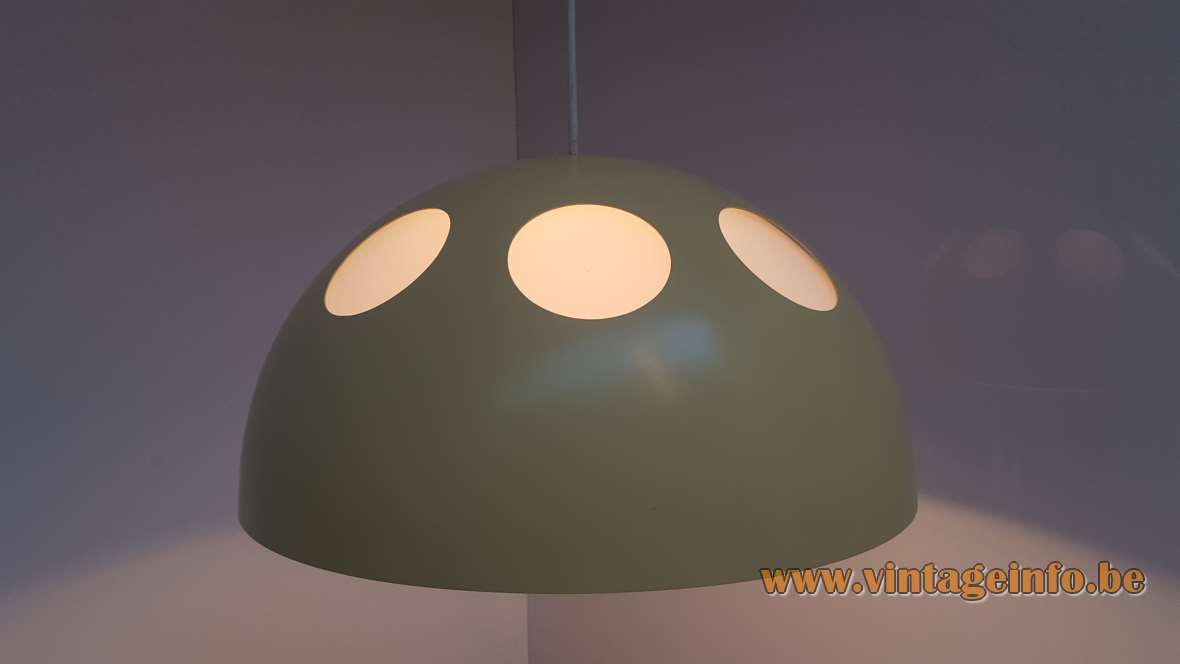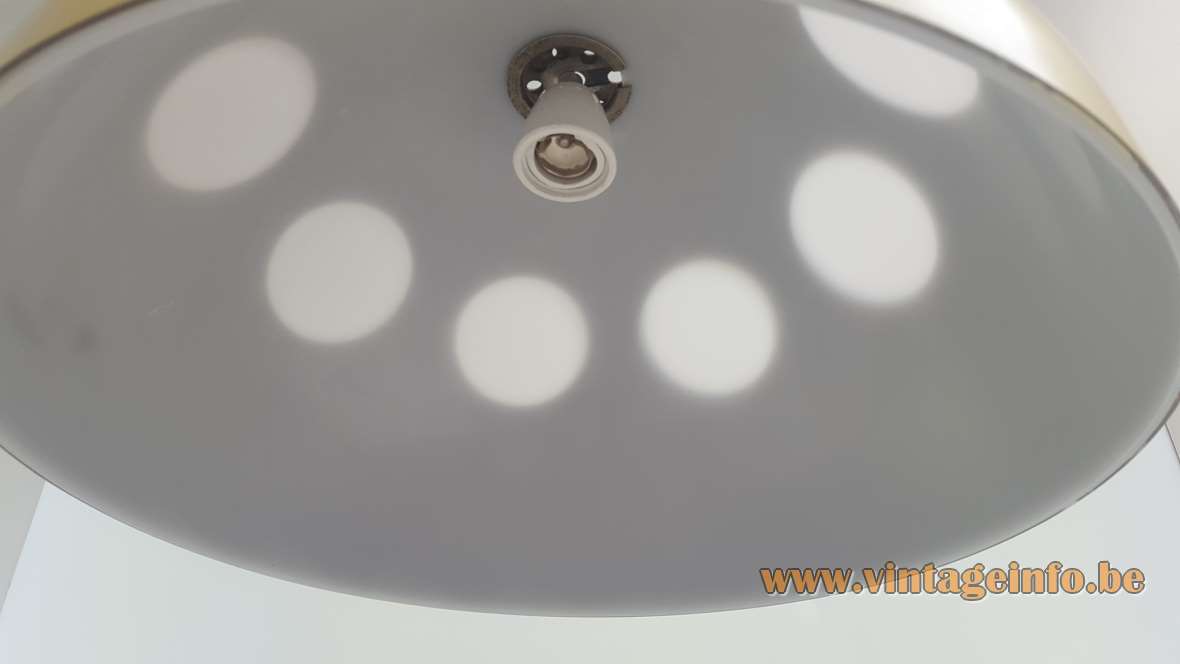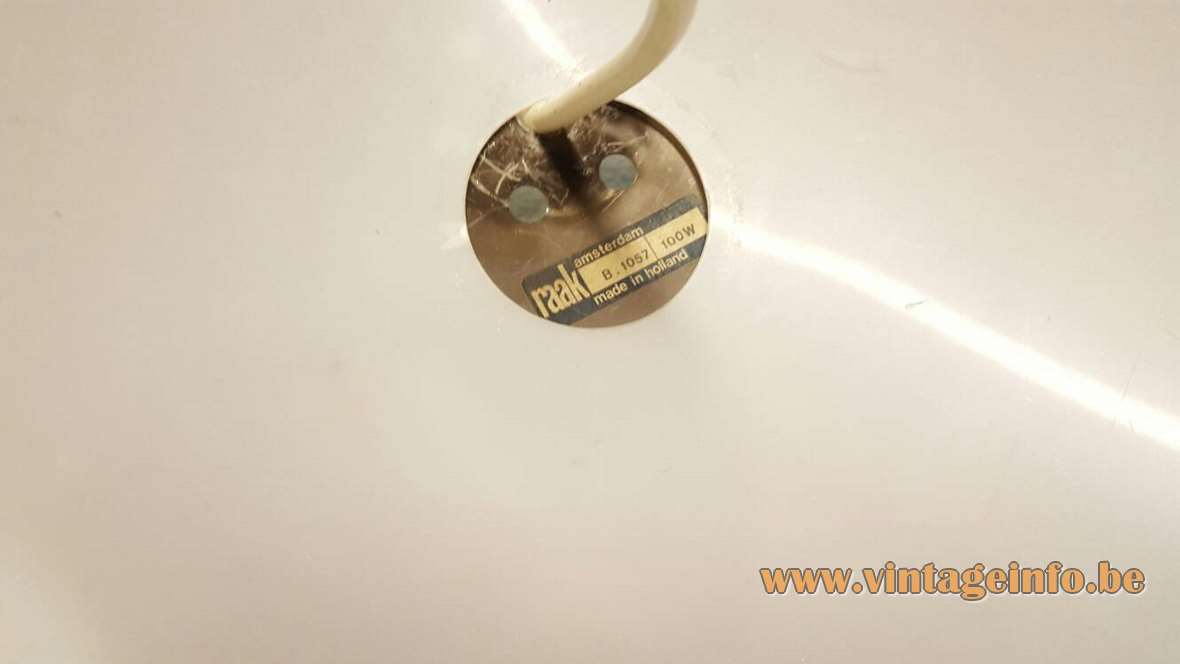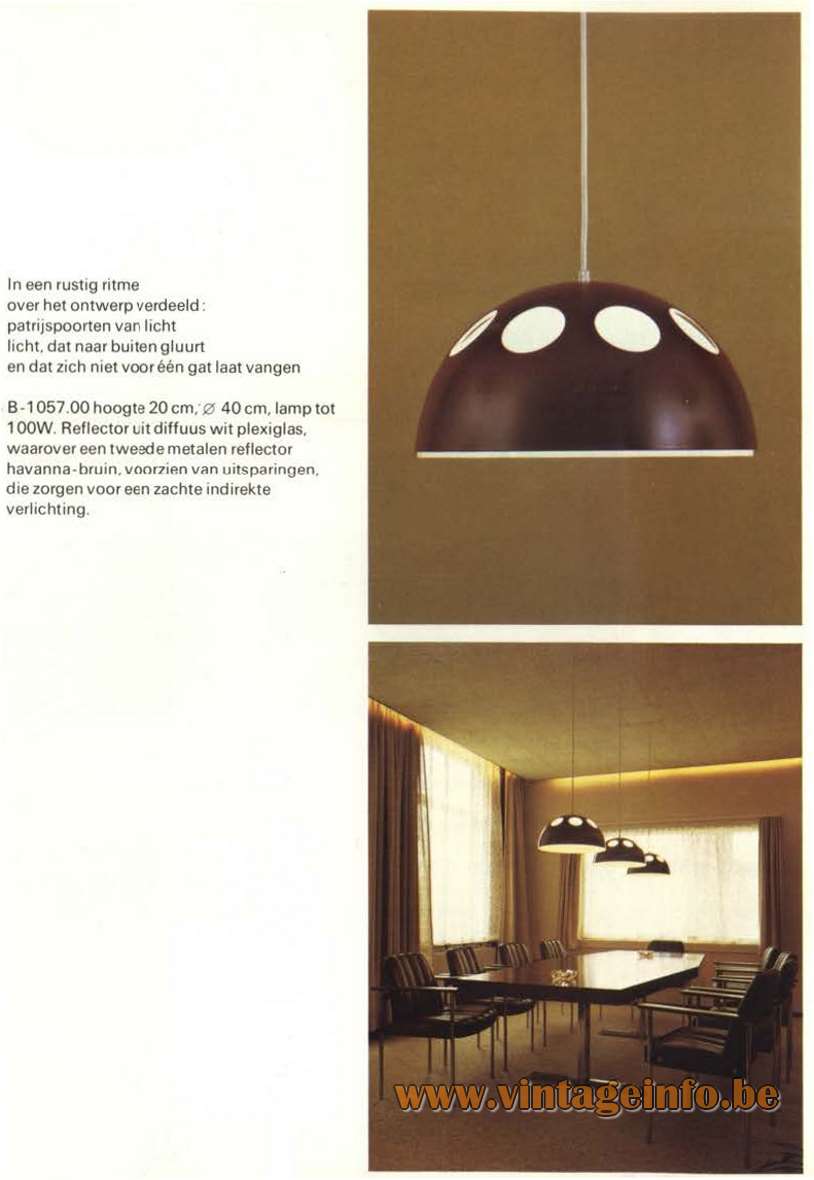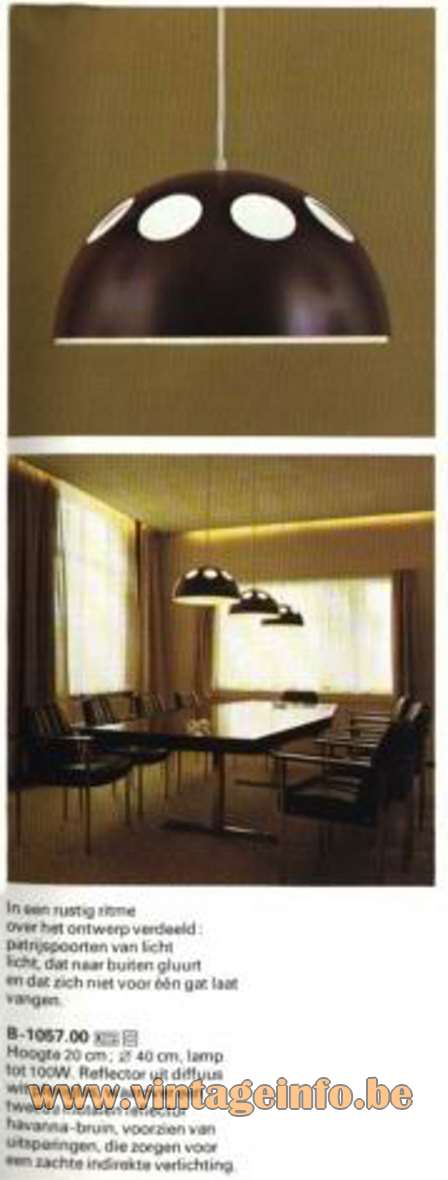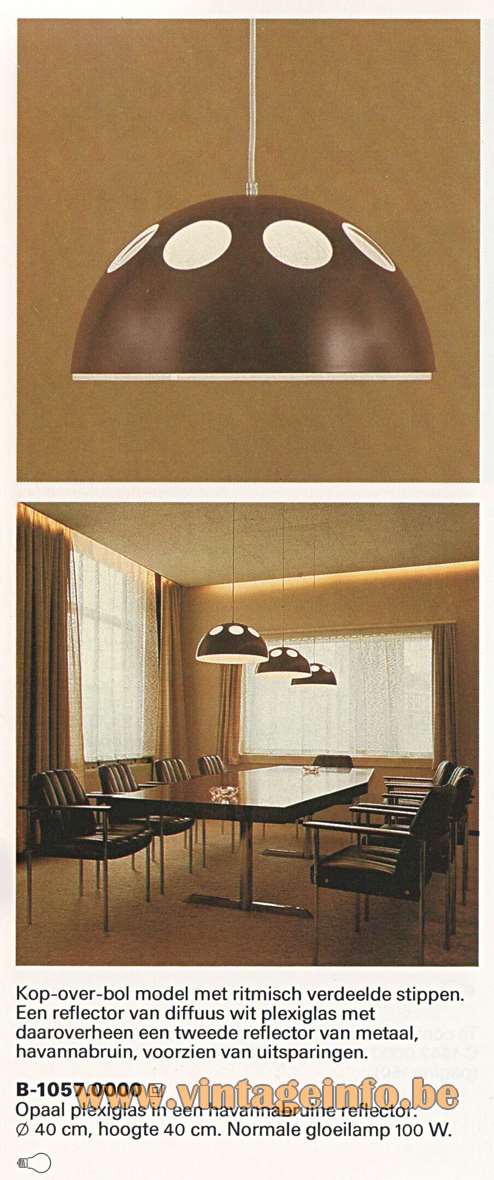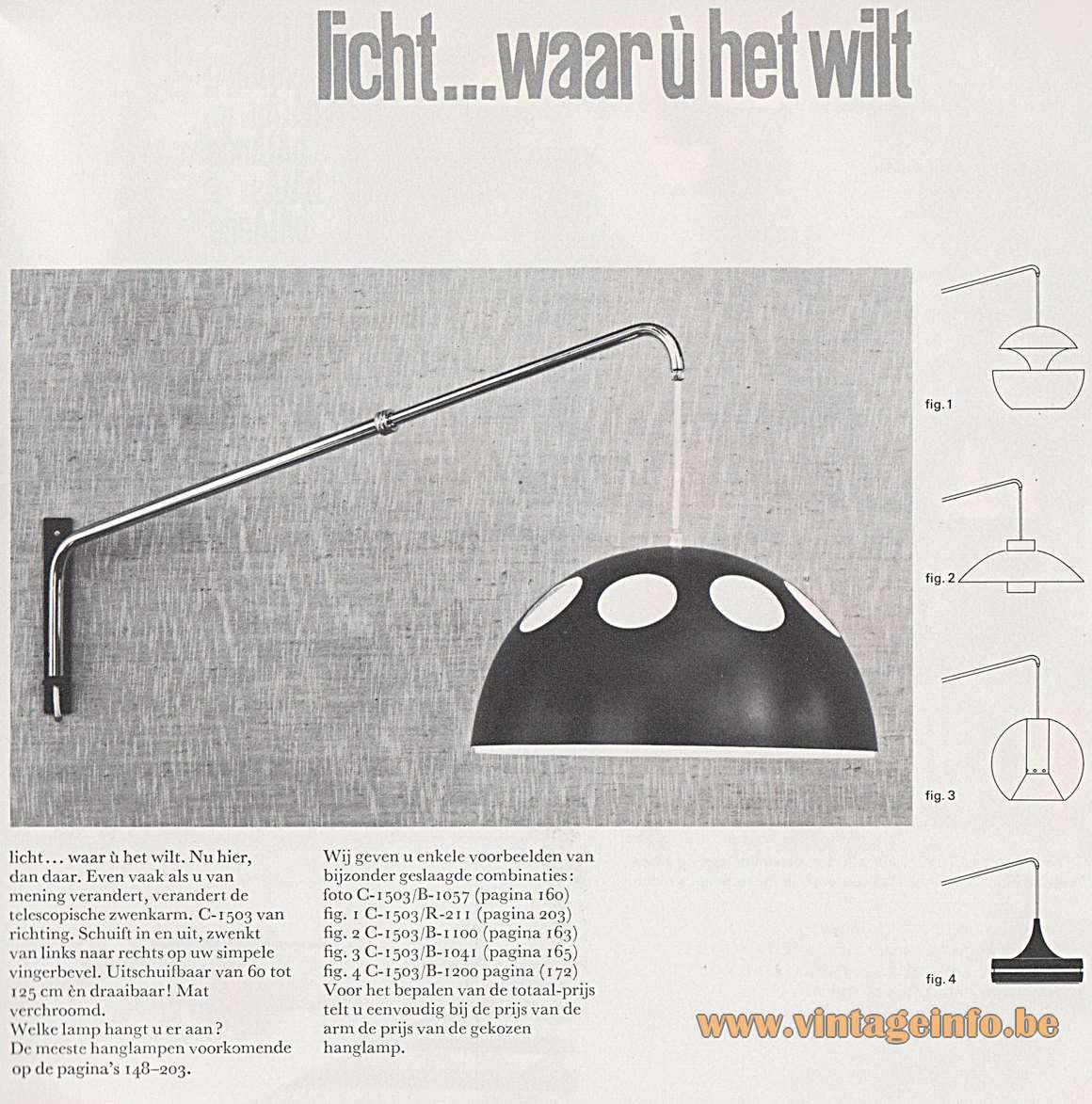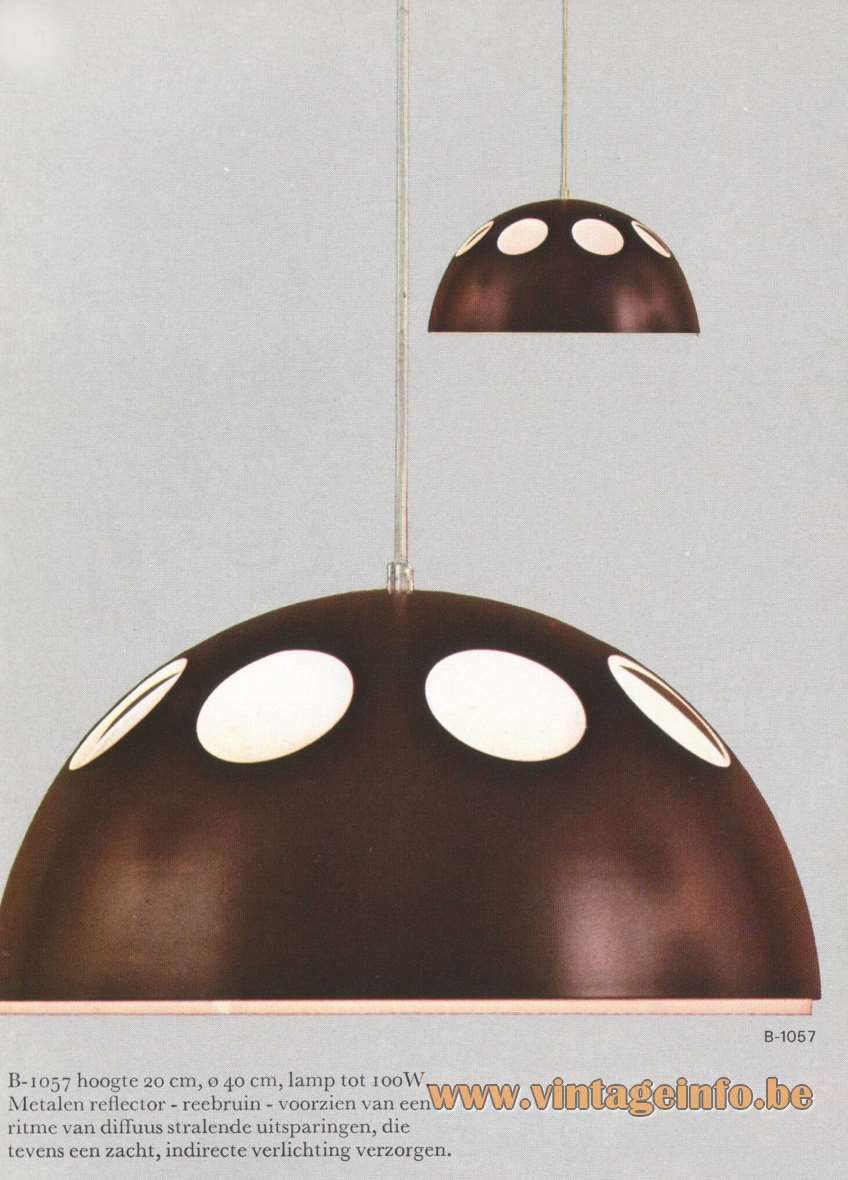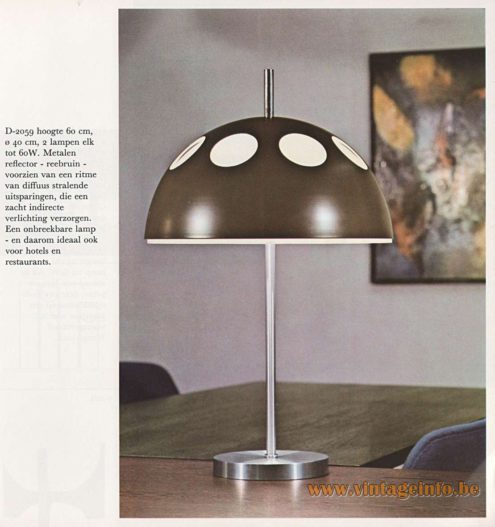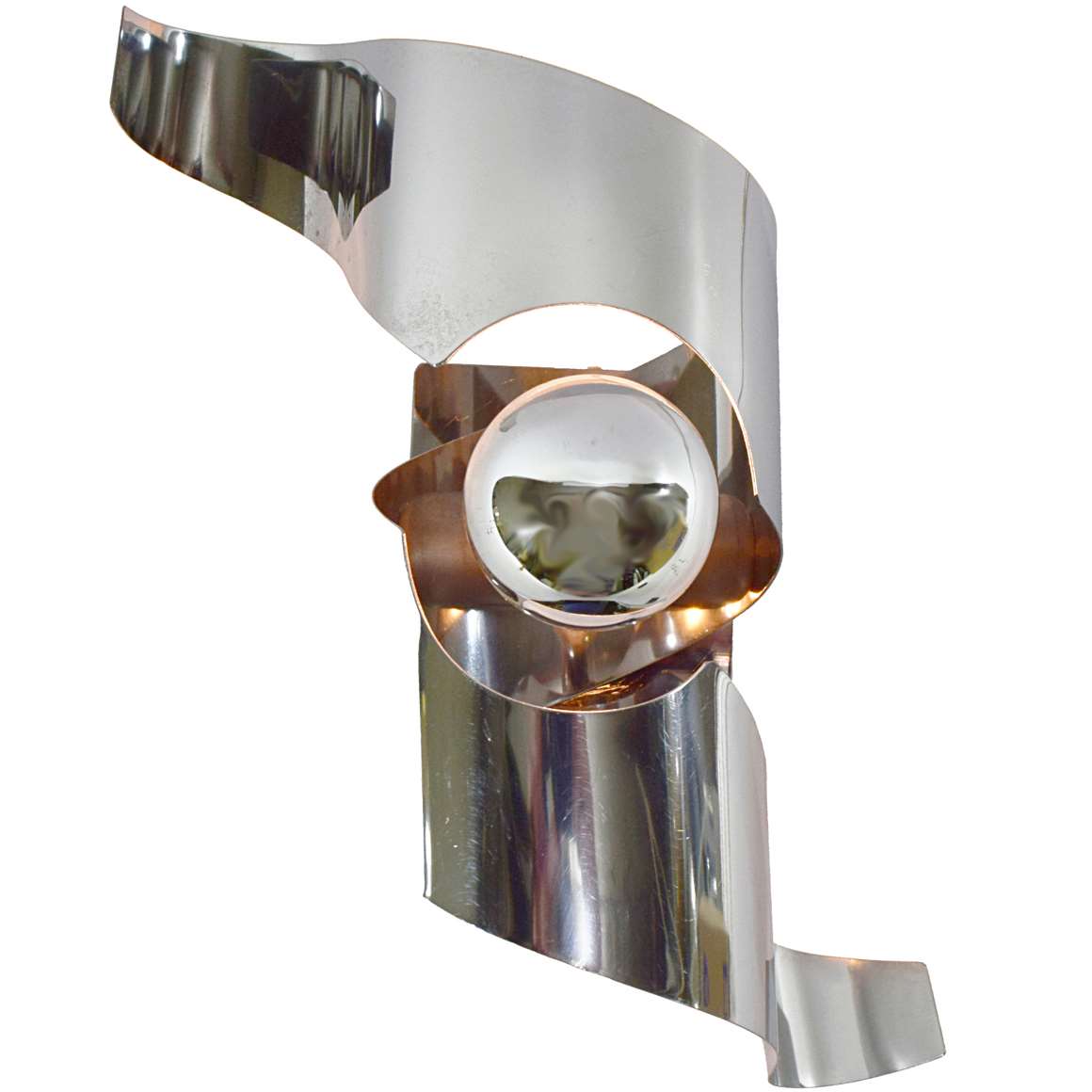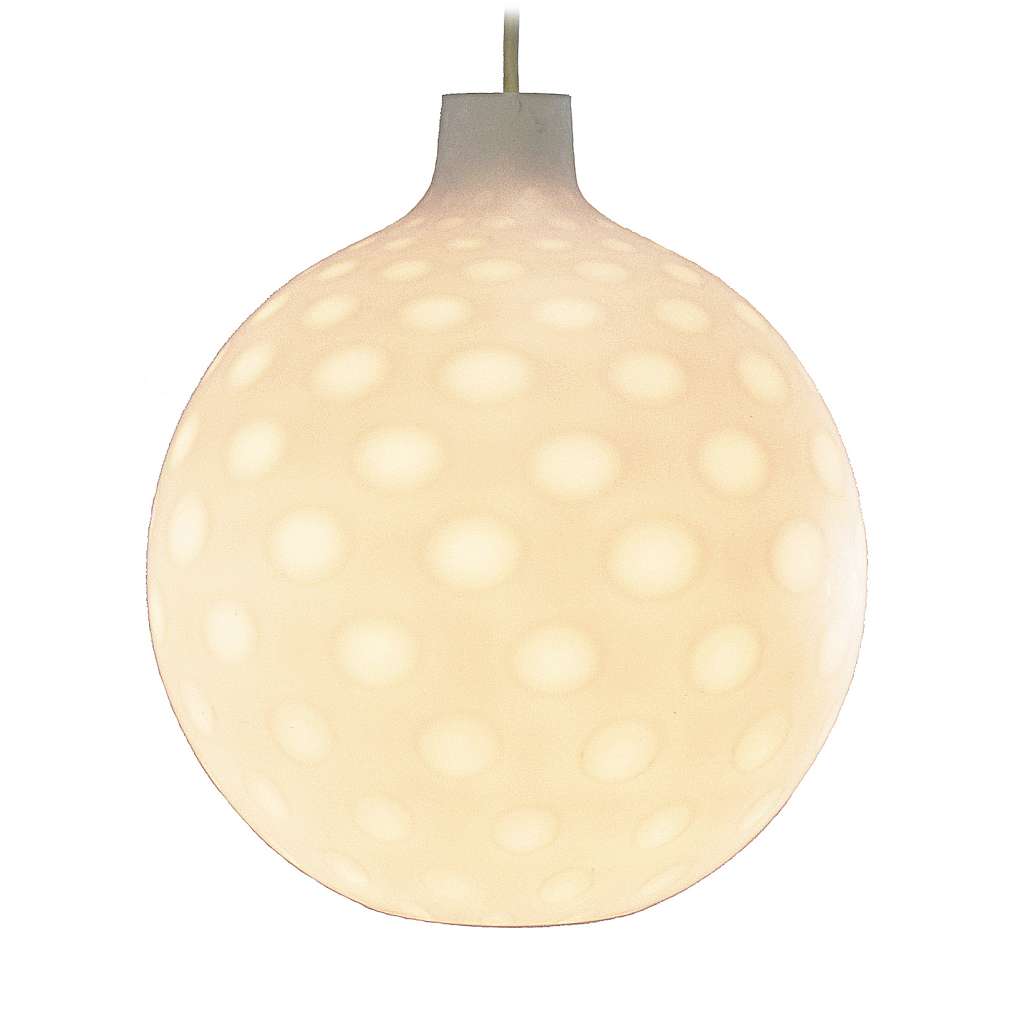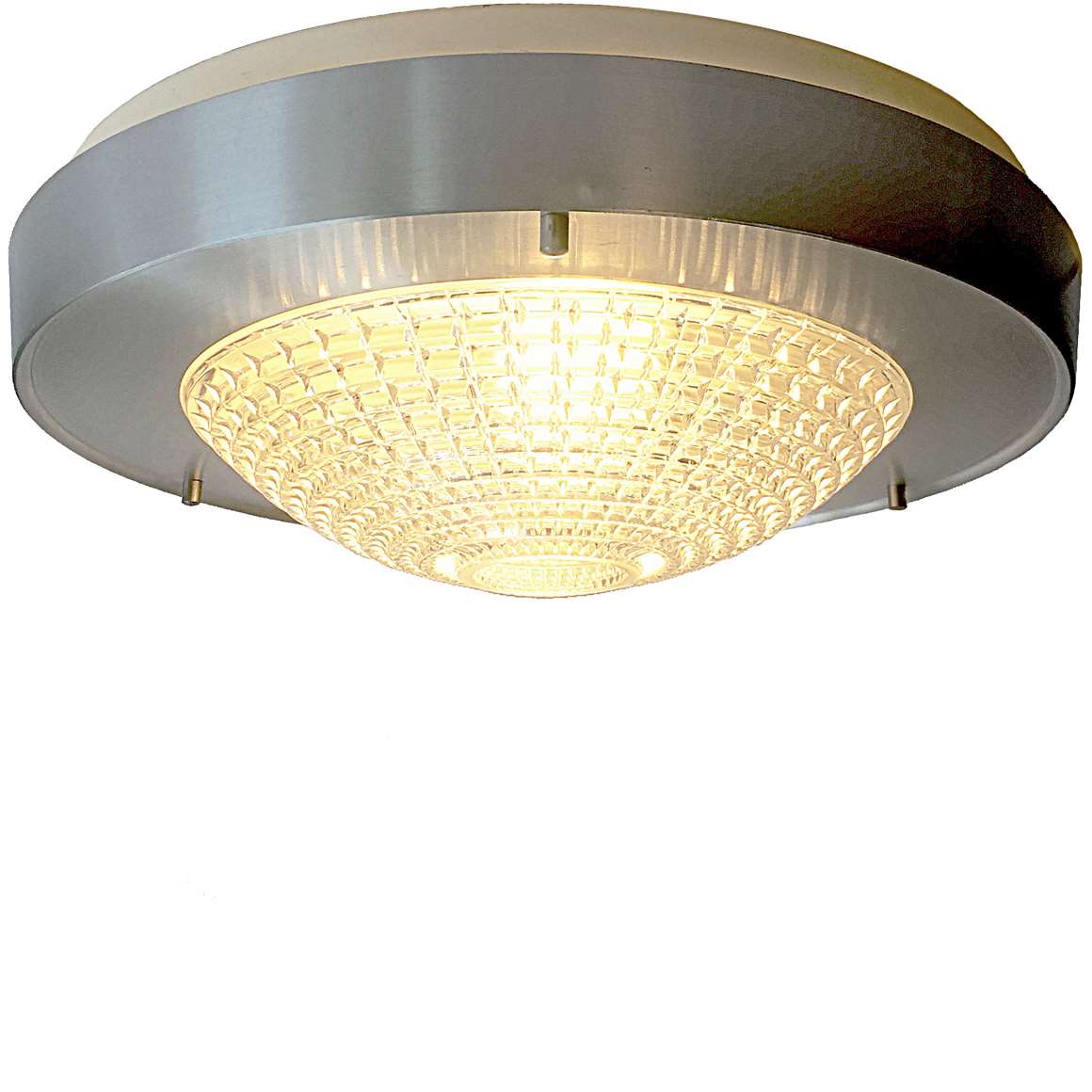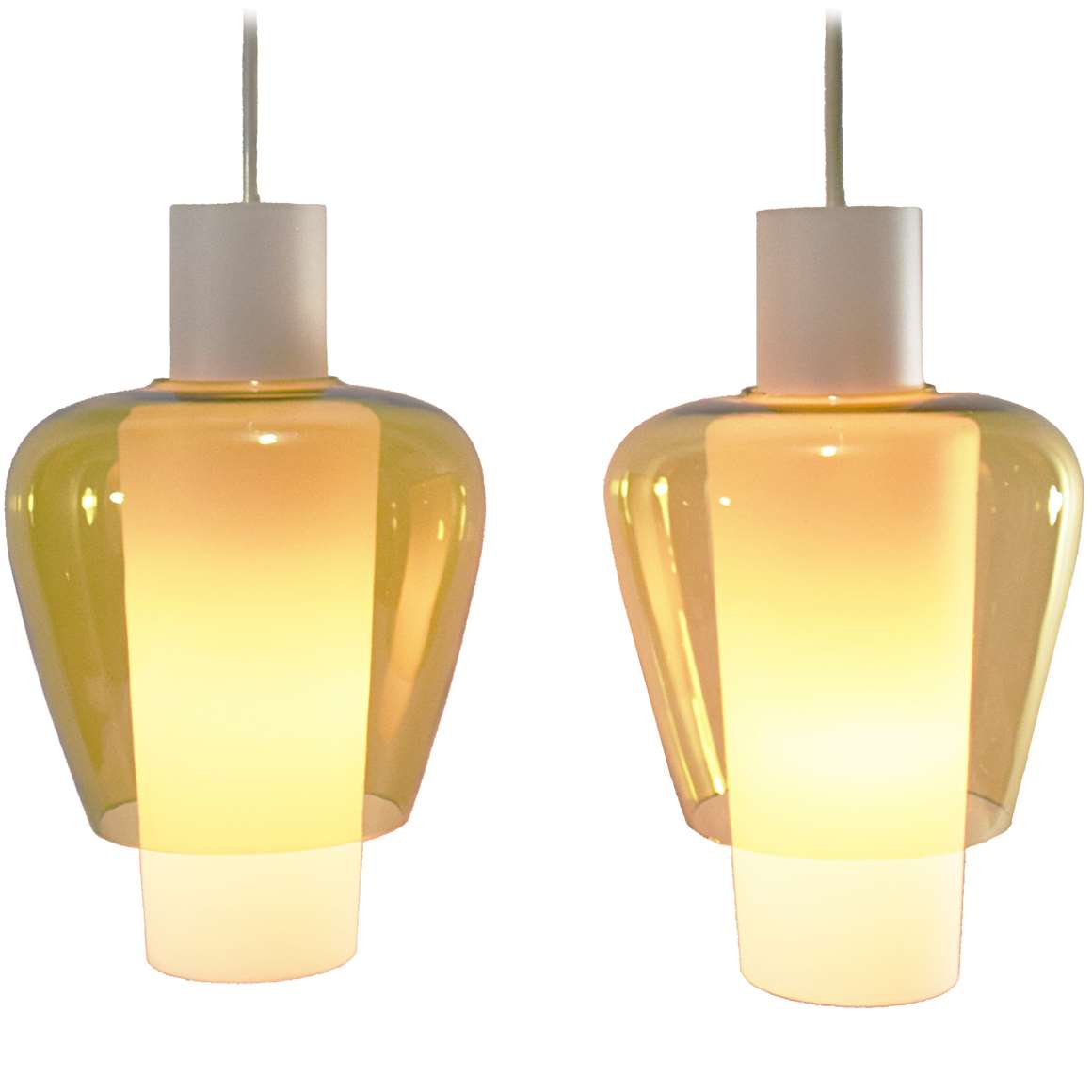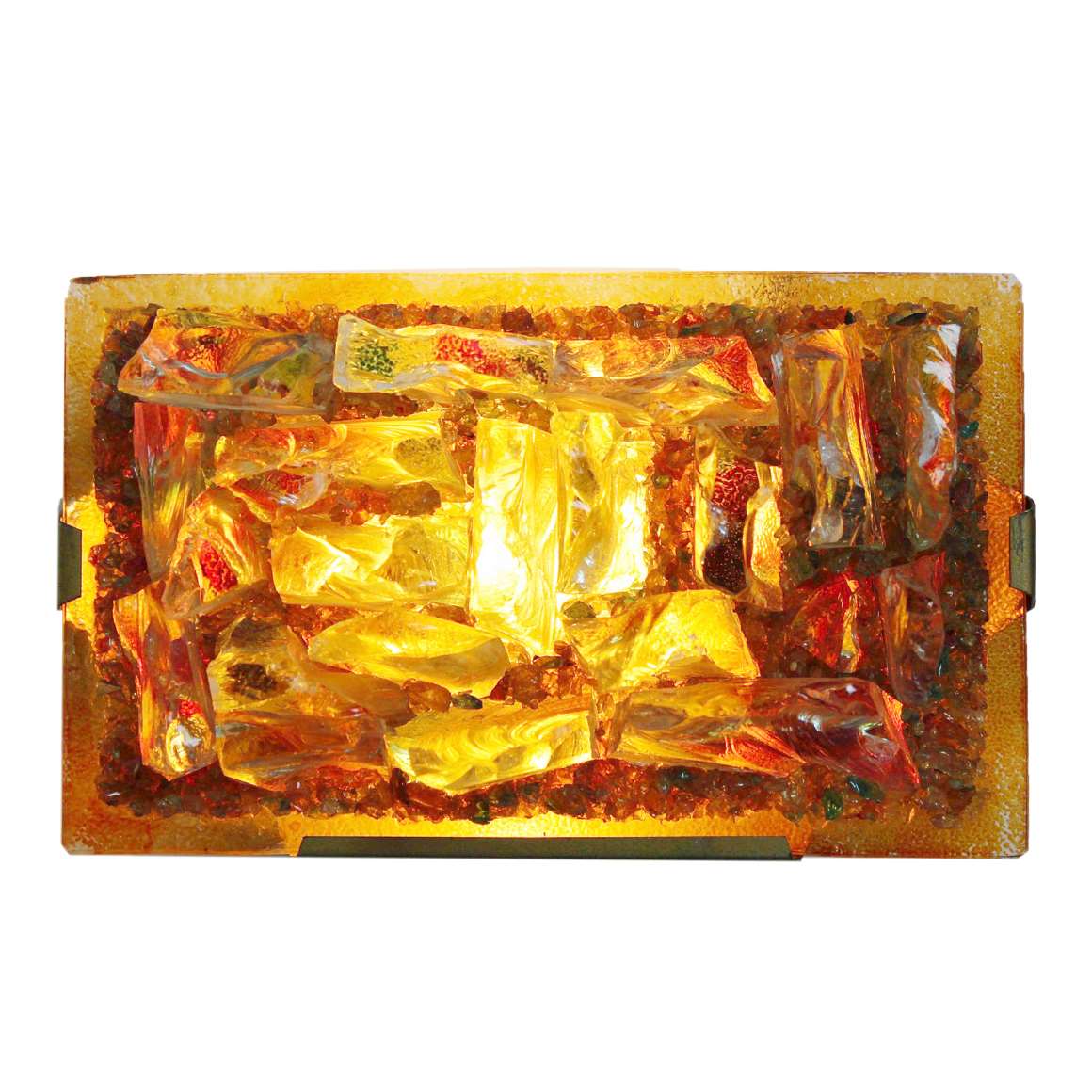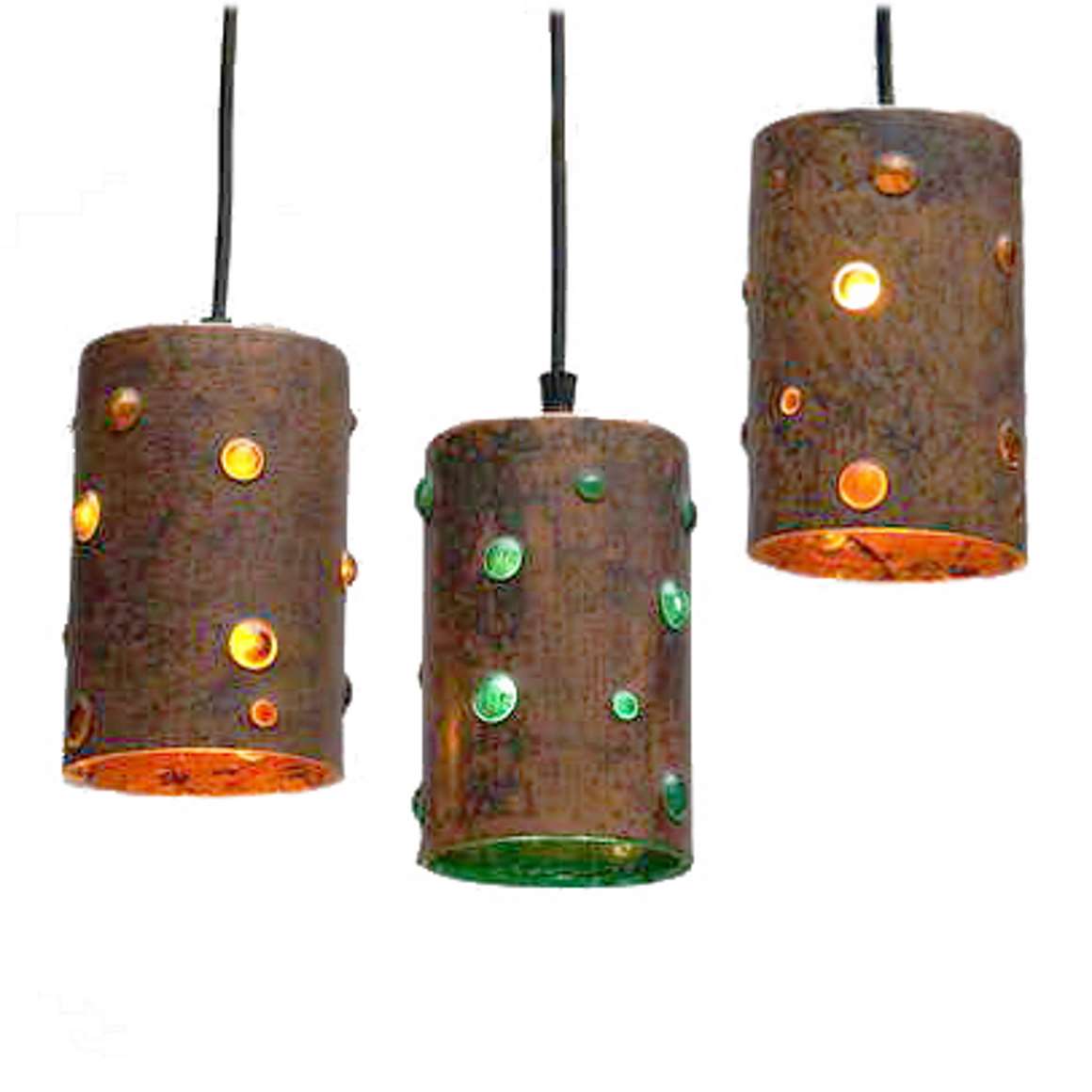From 1972 until 1982 the same pictures were used in the catalogues.
Links (external links open in a new window)
Vintageinfo
Four Sons Of Aymon flush mount
Chartres blue-green glass wall lamp
Raak Mushroom Pendant Lamp B-1057
Materials: Ocher painted metal half round mushroom lampshade with big round holes on top. White acrylic diffuser inside. Porcelain E27 socket.
Cord Length: 60 cm / 23.62’’
Height: 20 cm / 7.87”
Width: ∅ 40 cm / 15.74”
Electricity: 1bulb E27, 1 x 100 watt maximum, 110/220 volt.
Any type of light bulb with an E27 screw base can be used, not a specific one preferred.
Period: 1960s, 1970s, 1980s – Mid-Century Modern.
Designer: To be appraised.
Manufacturer: Raak Amsterdam, The Netherlands.
Other versions: This Raak mushroom pendant lamp B-1057 exists in several colours. Also made as a table lamp and wall lamp: a C-1503 arm in combination with this pendant lamp, as you can see in the catalogue.
Appears in the Raak catalogues from 1968 until 1982.
A strange thing is that the B-1057 label also is used for the Raak Chrysaline pendant lamp, as you can see over here on Vintageinfo.
This pendant lamp is often confused with the Raak “El Duomo ” pendant lamp, but that is because they appear next to each other in catalogue 9 as you can see over here on Vintageinfo.
The table lamp, model D-2059 exists also without the metal lampshade, only with a white acrylic lampshade, as you can see over here in the Raak catalogue 9 from 1972. It is model D-2058.
Raak
The Dutch company Raak was founded in 1954 by Carel O. Lockhorn (18 June 1923 – 6 October 2004), a previous employee of Philips Lighting Eindhoven. Raak, which means “to hit” in Dutch, implies design which precisely “hits the nail on the head”.
Raak is best known for their organic modern design of the 1960s and 1970s which combined glass & metals for a sophisticated futuristic style.
Collaborations
The light company collaborated with several international designers and architects, including Bertrand Balas, Evert Jelle Jelles, Frank Ligtelijn, Ger Vos, Jan Jasper Fayer, Li Helo, Maija-Liisa Komulainen, Nan Platvoet, Nanny Still-Mackinney, Nico Kooi, Sergio Asti, Tapio Wirkala, Willem van Oyen and many others.
Raak also collaborated with other companies. They worked with the German Peill+Putzler for the Raak Globe lamps. Peill+Putzler produced the glass. They also sold lamps made by Peill+Putzler, such as a pendant lamp designed by Aloys Ferdinand Gangkofner. For the Raak Discus the glass was made by Bega, also a German company. For the Stalactites flush mounts a cooperation with the Belgian Val Saint Lambert was undertaken in the late 1950s. Raak also sold some lamps that were produced by Staff Leuchten (Staff & Schwarz Leuchtenwerke GMBH) from Germany, and several other companies.
Carel Lockhorn sold the company in 1974 to ITT but remained a director until 1977. In 1980 Raak merged with BIS Lighting from Aalsmeer, also in The Netherlands and was renamed into BisRaak. In 1986 the Raak company became independent again. The company got a business appearance and only the colours white, black and grey were still processed.
In 1999, Raak merged with Artilite B.V. and Indoor B.V. and became CLA: Centrum voor Lichtarchitectuur B.V. in Drachten (Centre for Light Architecture). Lichtarchitectuur (light architecture) was the Raak tagline from the beginning in the 1950s. The Centre for Lighting Architecture was founded by Egbert Keen. The company was declared bankrupt on 19-05-2011.
Acrylic: often named by its commercial name: Perspex, Plexiglas, Crylux, Acrylite, Lucite, is a thermoplastic.
Raak D-2059 table lamp
Many thanks to Marjan from Vintage Drachten for the beautiful pictures and the enthusiasm.
